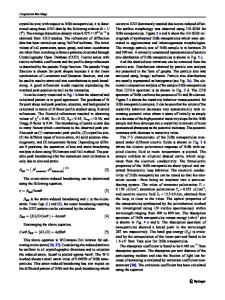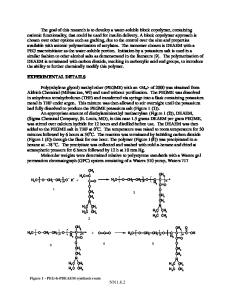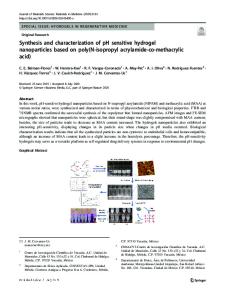Development of a facile one-pot synthesis method for an ingestible pH sensitive actuator
- PDF / 1,316,124 Bytes
- 9 Pages / 432 x 648 pts Page_size
- 81 Downloads / 364 Views
MRS Advances © 2019 Materials Research Society DOI: 10.1557/adv.2019.370
Development of a facile one-pot synthesis method for an ingestible pH sensitive actuator Alex Keller1, Holly Warren2 and Marc in het Panhuis1,2 1
School of Chemistry and Molecular Bioscience, University of Wollongong, Wollongong, NSW 2522, Australia.
2 ARC Centre of Excellence for Electromaterials Science, AIIM Facility, University of Wollongong, Wollongong, NSW 2522, Australia.
ABSTRACT
Edible devices are an emergent technology and in this paper the simplicity and efficacy that poly(acrylic acid)/calcium hydroxide possess in creating a pH sensitive ingestible actuator which responds to acidic environments such as gastric fluid is demonstrated. It was found that poly(acrylic acid)/calcium hydroxide hydrogels exhibit reversible actuation upon submerging in 0.1 M sodium citrate for 2 hours. Our results show that these hydrogels can restore their compressive stress to 0.19 ± 0.06 MPa, swelling ratio to 26 ± 2 and volume to 56% ± 3% of its original volume. This work offers new possibilities for developments in a variety of fields such as drug delivery, 4D printed materials, soft robotics and edible devices.
INTRODUCTION Gastro-intestinal (GI) issues are one of most prevalent health concerns among the medical community with over three quarters of people suffering from irritable bowel syndrome going undiagnosed [1] and stomach cancer causing the 2nd highest rate of cancer deaths [2]. These conditions, although common, usually remain undiagnosed until they become symptomatic. This is a result of the complex nature of the GI tract, whereby means to monitor and treat these conditions typically involve methods and devices which are complex, dangerous and expensive. One of the most common issues with GI treatment is the risk of retention of medical devices as these tools have traditionally consisted of toxic materials [3– 5]. One material which offers a possible safer alternative to construct complex medical devices are bioresorbable hydrogels.
Downloaded from https://www.cambridge.org/core. IP address: 95.181.177.33, on 11 Dec 2019 at 00:01:02, subject to the Cambridge Core terms of use, available at https://www.cambridge.org/core/terms. https://doi.org/10.1557/adv.2019.370
Hydrogels are extremely hydrophilic polymer networks with the potential to absorb up to 99% (w/w) water [6,7]. The unique properties of these polymers offer a range of advantageous properties which make them useful in the development of novel medical devices, such as being biocompatible[8,9], 3D printable [10–12], conductive [13,14] and actuating. [15,16] One of the most common non-toxic hydrogels is the superabsorbent poly(acrylic acid). Poly(acrylic acid) is a simple polymer consisting of a repeating units of a vinyl group with an attached carboxylic acid [17,18]. These gels are an ideal candidate for ingestible device research due to their biocompatibility and have already been demonstrated in a wide variety of medical applications such as drug delivery [19], wound dressi
Data Loading...











